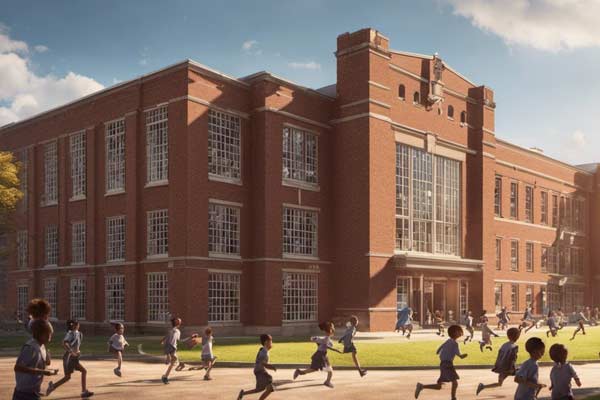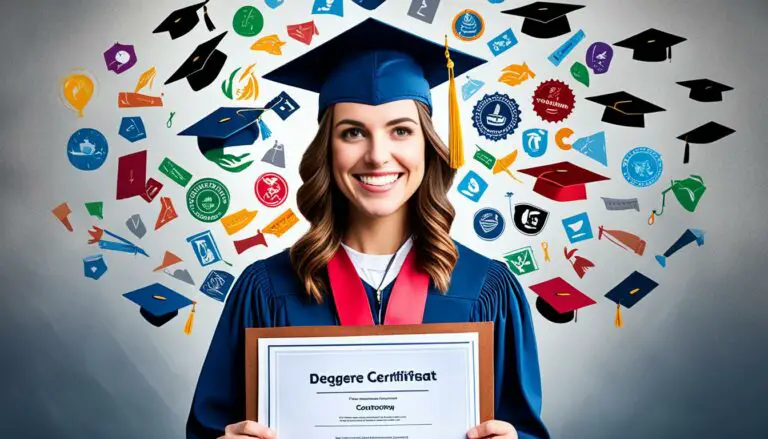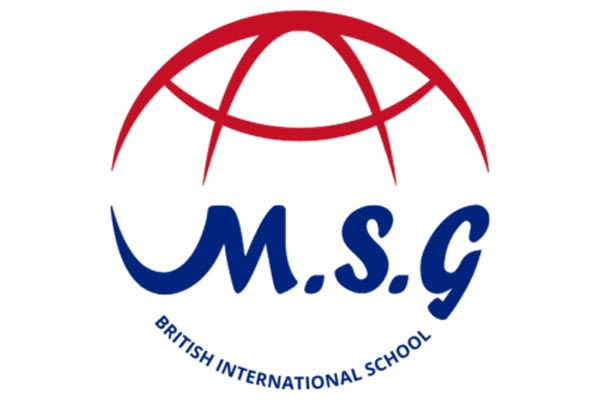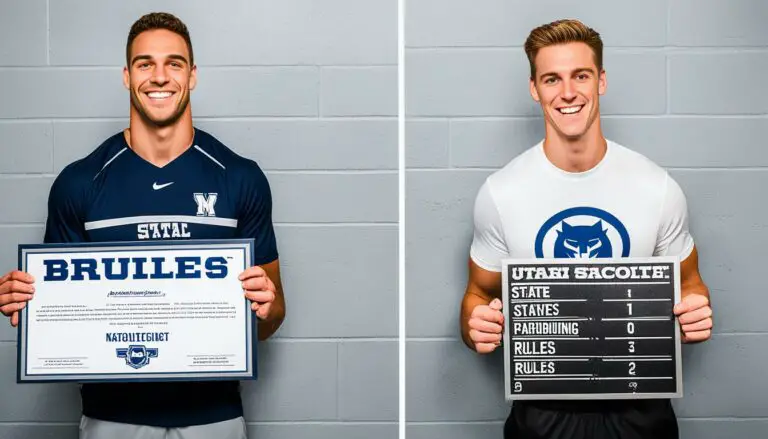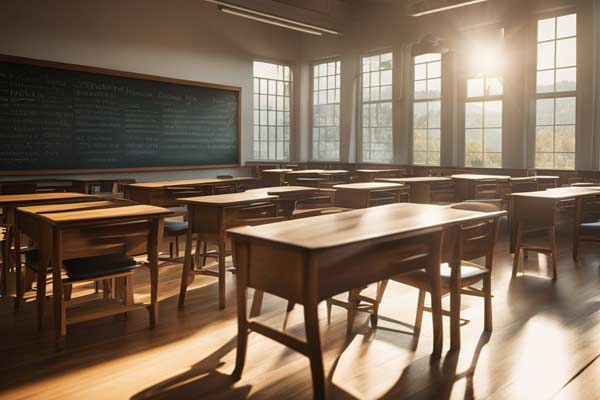Do Public Schools in the US Accept International Students? Exploring Admissions Policies and Requirements
Public schools in the United States are known for providing free education to students who are residents of the country. However, many international students wonder if they can attend public schools in the U.S. The answer to this question is not straightforward, as it depends on several factors.
Firstly, it is essential to note that public schools in the U.S. can accept international students, but only if they are in the country on certain types of visas. For example, F-1 and J-1 visas are commonly used by international students who wish to attend public schools.
These visas are issued to students enrolled in a program of study in the U.S., and they allow students to stay in the country for the duration of their studies.
However, it is worth noting that not all public schools in the U.S. are authorized to accept international students. Schools must be certified by the Student and Exchange Visitor Program (SEVP) to accept international students.
SEVP only certifies certain types of K-12 schools, including private K-12 schools and public high schools. Therefore, international students who wish to attend public schools in the U.S. should ensure that the school they are interested in is SEVP-certified before applying.
Understanding International Student Admission
International students seeking to study in public schools in the United States must meet specific admission requirements. These requirements vary depending on the student’s visa type, the length of their stay, and other factors.
To study in a public high school, international students must obtain an F-1 visa a non-immigrant student visa. The F-1 visa is issued to students who plan to attend an academic or English Language Program at a U.S. college or university.
To get an F-1 visa, a student must first be admitted to an SEVP-certified school. After that, they should apply for the visa and attend an interview at a U.S. embassy or consulate.
During the interview, the student must demonstrate that they have ties to their home country and intend to return after completing their studies in the United States.
International students who wish to study in a public school for more than 12 months must also obtain an M-1, non-immigrant vocational student visa. The M-1 visa is issued to students who plan to attend a non-academic or vocational school in the United States.
It is important to note that international students in public schools must pay the costs of their secondary school education. However, some schools may waive the tuition requirement for high school students.
🌟 Hey Students! 🚀 Ready for the ultimate experience? Join us on Studentsinside.com's Facebook, YouTube, WhatsApp, and LinkedIn. Click now for tips, fun, and success vibes! 🌈✨ #StudentLife #JoinUs
Public Schools Vs. Private Schools
When it comes to education in the U.S., parents have the option to choose between public and private schools.
The government funds public schools, which are free to attend for all students, while private schools are independently funded and require tuition fees to be paid.
One of the main differences between public and private schools is the class size. Private schools generally have smaller class sizes, which allows for more individual attention and a more personalized learning experience.
On the other hand, public schools tend to have larger class sizes due to the high number of students enrolled.
Another difference is the level of diversity. Public schools are generally more diverse, with students from different socio-economic backgrounds and cultures. Private schools, on the other hand, tend to have a more homogenous student body, with students from similar backgrounds and socio-economic statuses.
When it comes to high schools, both public and private options are available. Public high schools are free to attend and offer various programs and extracurricular activities.
Private high schools, on the other hand, require tuition fees to be paid and generally offer more specialized programs and extracurricular activities.
In terms of universities, public and private options are also available. The government funds public universities and offers lower tuition costs for in-state students.
Private universities, on the other hand, are independently funded and generally have higher tuition and fees.
Eligibility Criteria and Application Process
Public schools in the U.S. do accept international students, but there are specific eligibility criteria that applicants must meet.
Eligibility Criteria
International students need to fulfill specific requirements to join U.S. public schools. These eligibility criteria may vary from state to state and school district to school district. However, some standard eligibility criteria are:
- The student must have a valid visa to study in the U.S.
- The student should have strong grades and meet the district’s GPA standards.
- The student must provide transcripts from their previous school(s).
- The student must provide proof of immunization records.
- The student must provide proof of financial support, including a bank statement or letter from a sponsor.
- The student must obtain a Form I-20 from the school they plan to attend.
- The student needs to pay the I-901 SEVIS fee.
In addition to these eligibility criteria, some school districts may require international students to take the TOEFL exam to demonstrate their proficiency in English.
Application Process
The application process for international students varies from school district to school district. However, some common steps in the application process are:
- The student must complete an application form, which may be available online or in paper form.
- The student must provide transcripts from their previous school(s).
- The student must provide proof of immunization records.
- The student must provide proof of financial support, including a bank statement or letter from a sponsor.
- The student must obtain a Form I-20 from the school they plan to attend.
- The student needs to pay the I-901 SEVIS fee.
Some schools ask international students for extra papers like personal statements or recommendation letters.
It is important to note that some school districts may have limited availability for international students, especially at the high school level. Therefore, it is recommended that international students apply as early as possible to increase their chances of being accepted.
Financial Aspects
Public schools in the U.S. often charge tuition fees for international students. The tuition fees vary depending on the state and district of the school.
Generally, international students are required to pay the total cost of tuition, which is higher than the cost for in-state students. The per capita cost for international students can range from $8,000 to $30,000 annually.
Financial aid is available for international students in some public schools in the U.S. However, the amount of financial aid available to international students is limited.
International students can’t get federal financial aid, but some schools have their aid programs. This can include scholarships, grants, and loans at public schools.
Scholarships are often the most common form of financial aid for international students. Scholarships can be based on academic merit, athletic ability, or other criteria. Some schools offer full-tuition scholarships to international students who meet specific requirements.
Application fees for international students are generally higher than those for domestic students. The application fee can range from $50 to $100 per application. Some schools waive the application fee for international students who demonstrate financial need.
Accommodation and Transportation
International students attending public schools in the U.S. may need to find accommodation and transportation during their stay. Some American schools offer on-campus accommodations for international students, such as dormitories with many rooms for sleeping and living.
These dormitories often have two or three people of the same gender per room. However, not all schools offer on-campus accommodations, so students may need to find alternative housing options.
One option for international students is to live with a host family. Host families are American families who open their homes to international students and provide them with a place to stay during their studies.
Living with a host family can be an excellent way for international students to experience American culture and improve their English language skills. However, it is vital to carefully research and choose a reputable host family program to ensure a safe and positive experience.
In terms of transportation, many American schools offer bus services for students to get to and from school. International students can also use public transportation, such as buses and trains, to travel around the city. However, it is essential to note that transportation costs can add up quickly, so students should budget accordingly.
Academic Life and Support Services
International students attending U.S. public schools can expect access to various academic and support services. These services assist students in academic and social success, equipping them to flourish in a different culture.
One of the most essential academic services available to international students is access to a comprehensive curriculum. U.S. public schools typically offer a wide range of math, science, English, social studies, and the arts courses.
International students can choose from these courses to create a personalized academic program that meets their needs and interests.
In addition to a solid academic program, U.S. public schools offer various support services to help international students succeed. These services may include tutoring, academic counseling, and language support.
Many schools also have dedicated staff members who work with international students to help them adjust to a new culture and navigate the challenges of studying in a foreign country.
Extracurricular Activities
Extracurricular activities are an essential part of the American high school experience. Participating in these activities helps students discover passions, hone skills, and connect with peers.
Virtually all public schools in the U.S. offer a core of extracurricular activities, including sports, performing arts, publications, and honor societies. Most schools also provide access to academic clubs and student government.
International students attending public schools in the U.S. are typically welcome to participate in extracurricular activities. However, it is essential to note that participation in some activities, particularly sports, may be subject to eligibility requirements.
These requirements may include meeting academic standards, having a certain level of proficiency in the sport, and meeting age and residency requirements.
It is also worth noting that participation in extracurricular activities may require additional fees, such as equipment costs or travel expenses.
Some schools provide financial aid for extracurriculars, but international students should consider possible costs.
Participating in extracurriculars can be challenging for international students but beneficial. It helps them fit into the school, make friends, and gain valuable skills.
State-wise Analysis
The government funds public schools in the United States and offers free education to all students who meet the eligibility criteria.
International students who wish to study in public schools in the U.S. have to meet certain requirements and go through a specific process to be admitted.
State-wise analysis shows that each state has its own set of rules and regulations regarding the admission of international students in public schools. Here is a breakdown of some of the most populous states in the U.S.:
New York
New York is home to some of the best public schools in the U.S. The New York City Department of Education (NYCDOE) accepts international students residing in the city with a parent or legal guardian. International students living in New York City without a parent or legal guardian can’t attend public schools.
California
California is another state that has a large number of public schools. The California Department of Education (CDE) allows international students to attend public schools if they are residing in the state with a parent or legal guardian. International students living in California without a parent or legal guardian are not eligible to attend public schools.
Texas
The Texas Education Agency (TEA) allows international students to attend public schools if they are residing in the state with a parent or legal guardian. International students not living in Texas with a parent or legal guardian are not eligible to attend public schools.
Massachusetts
The Massachusetts Department of Elementary and Secondary Education (DESE) allows international students to attend public schools if they are residing in the state with a parent or legal guardian. International students not living in Massachusetts with a parent or legal guardian are not eligible to attend public schools.
Florida
The Florida Department of Education (FDOE) allows international students to attend public schools if they are residing in the state with a parent or legal guardian. International students living in Florida without a parent or legal guardian are not eligible to attend public schools.
Graduation and Beyond
International students who attend public schools in the U.S. may have the opportunity to graduate with a high school diploma. However, it is essential to note that graduation requirements may differ from state to state and even from district to district.
Some schools may require international students to complete additional coursework or exams to meet graduation requirements.
After graduation, international students can continue their education at a U.S. college or university. However, it is essential to note that admission requirements for international students may differ from those for domestic students.
International students might have to take tests like TOEFL or IELTS and show financial proof. After graduating, they can work in the U.S. for 12 months through OPT. STEM graduates might get an extra 24 months.
It is important to note that OPT is not a guarantee of employment and does not guarantee that an international student can remain in the U.S. permanently. International students seeking U.S. residency should consider applying for a visa or related immigration status.
Legal Aspects
Several legal aspects must be considered regarding international students attending public schools in the U.S. The key elements in this process are the student’s visa, immigration rules, the law, and the Department of Homeland Security (DHS).
Firstly, public schools in the U.S. must legally enroll all students, no matter their immigration status. This means that international students are allowed to attend public schools in the U.S. as long as they meet specific requirements.
One of the main requirements for international students attending public schools is to have a valid visa. The most common type of visa for international students is the F-1 visa, which allows them to study in the U.S. for up to 12 months.
However, if the student is enrolled in a private school, they may be able to study for the entire academic program.
It’s also important to note that international students must pay the costs of their secondary school education. This includes tuition fees and any other fees or expenses associated with attending school.
Regarding restrictions, it’s worth noting that the 12-month attendance limit for F-1 students is strictly enforced. If an international student exceeds this limit, they may be subject to deportation by the DHS.
Impact on Economy and Diversity
International students greatly benefit the U.S. economy. In 2018, they added $45 billion through tuition, housing, and other costs, as the U.S. Department of Commerce reported.
This contribution helps to support jobs and businesses in the U.S., particularly in the education and hospitality sectors. Furthermore, international students often bring unique perspectives and skills that can benefit the U.S. economy and workforce.
International students not only boost the U.S. economy but also enhance the diversity of public schools. Research suggests that racially and socioeconomically diverse schools benefit students, educators, and the community.
However, progress toward increased diversity in schools has stalled in many communities.
It is important to note that admitting international students should not come at the expense of domestic students. Public schools should ensure they have the resources and support to provide a quality education to all students, regardless of their background.
Furthermore, admitting international students should be seen as something other than a way to generate revenue at the expense of providing a quality education. Public schools should prioritize the education and well-being of all students, both domestic and international.

